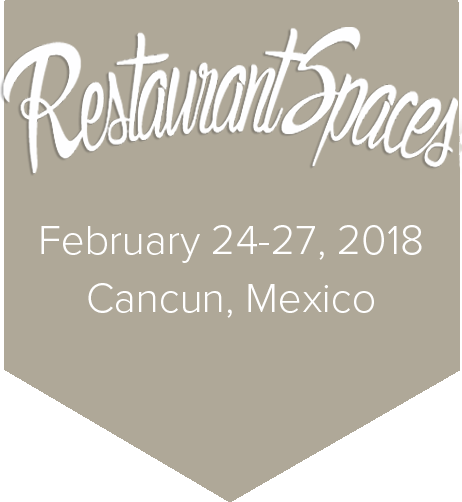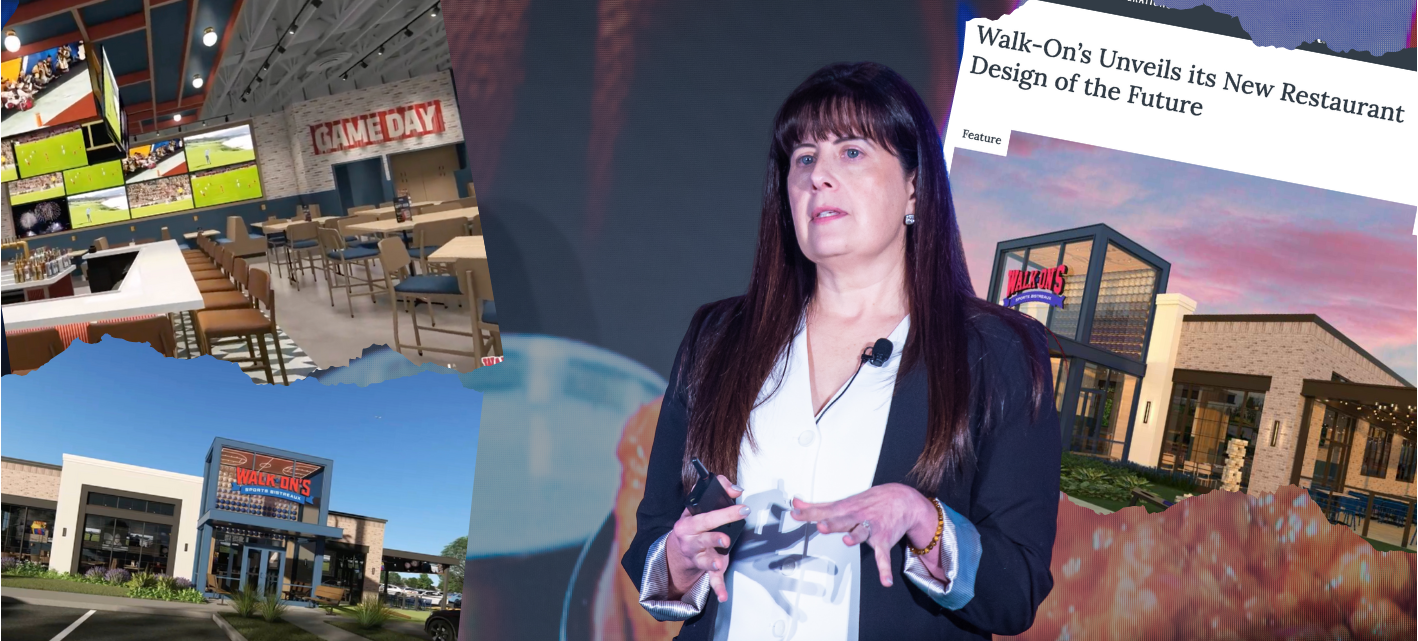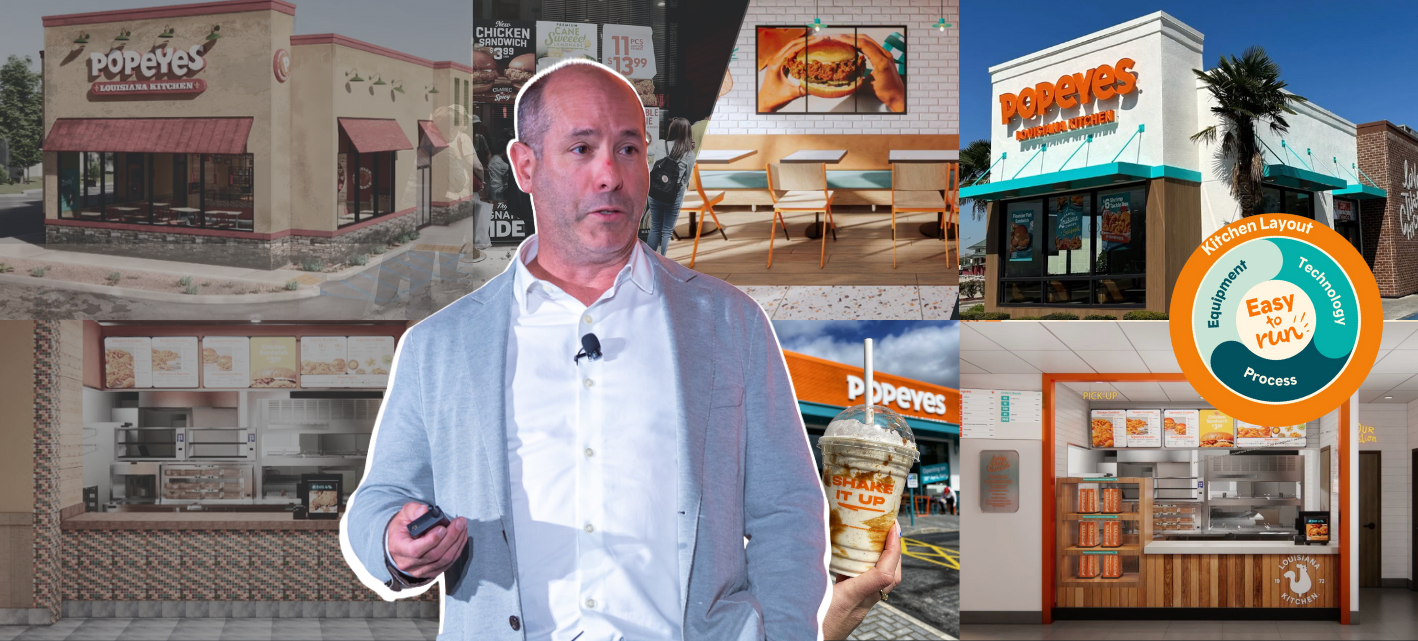At our recent RestaurantSpaces gathering, three seasoned execs took the stage for a panel discussion, Melissa Ng (SVP of Design & Construction, CAVA), Rob Gerstenfeld (VP of Real Estate, Construction & Design, QDOBA) and Suk Singh (Chief Development Officer, Wagamama) moderated by Sean McGuinness (Hospitality Director, Sargenti). They got candid about the real-world challenges and unexpected wins they're seeing in today's restaurant development landscape.
Rethinking the Restaurant Space
Melissa Ng gave us an inside look at Project Soul, CAVA’s redesign initiative aimed at dialing up Mediterranean hospitality through warm, earthy palettes, greenery, and branded artwork.
It’s not just about pretty spaces. According to Ng, the new design elements are having a tangible impact:
"The area lead actually wrote my team a really nice note thanking us for making that investment in their restaurant. Not only is it a beautiful new look but it's easier to maintain, the element has more longevity."
It’s a reminder: Thoughtful design isn’t just a brand play, it directly impacts team morale and the guest experience.
Growing a UK Brand in an American Market
Suk Singh is helping bring London’s cult-favorite Wagamama stateside. But the U.S. consumer has very different expectations.
"In London, people don't mind sitting this close. In America, people want space. So you go to our restaurants in the US and the first seats that get filled are the booth because people don't wanna sit next to each other."
From seating layouts to bar-forward concepts and a totally revamped real estate strategy (hello, Florida and Texas), Singh is reworking the entire model for a new audience.
Oh, and they’re not building 40 restaurants in NYC.
"We're in the business of trying to make money. How many flagships do you want before you start wanting to start making money? We're not supposed to build these things that people go, 'Hey, that's nice, but you're never gonna make money there.'"
QDOBA’s Secret Sauce? It’s Not Just the Guac.
With over 800 locations, QDOBA’s still one of the industry's “best kept secrets,” according to Rob Gerstenfeld.
Despite flying a little under the radar, the numbers speak for themselves:
- 20 consecutive quarters of comp growth
- 90 new locations opening this year
- Franchise interest is booming
Their biggest focus? Supporting franchisees with data, discipline, and design.
"We understand how important it is for the franchisee to build their first two, three, and four. Otherwise, they won't build five and six."
Gerstenfeld’s team is saying “no” more often than yes to ensure long-term success and rolling out second make lines and pickup lanes to boost throughput.
Real Estate Strategy is Getting Smarter
Across the board, execs are tightening up site selection and thinking deeper about market strategy.
- Wagamama is building where Brits vacation (hi, Orlando 👋)
- CAVA is aligning GC strategy with long-term pipeline forecasts
- QDOBA is layering in data-driven real estate insights to help franchisees get it right the first time
The lesson? Growth is great, but smarter, intentional growth wins.
Let’s Talk AI (But Not in a Cringe Way)
Forget robots on the front line. These brands are leveraging AI behind the scenes to crunch data, speed up workflows, and increase accuracy.
Ng shared how CAVA used AI to pull insights from a year’s worth of repair tickets:
"AI did not do anything that myself or my team couldn't do ourselves. But what would have normally taken days of pulling reports, doing the analytics ourself, packaging it up, took hours and in some cases minutes."
The future of restaurant tech? Less shiny gadgets, more meaningful efficiency.
What’s Next?
Melissa Ng is placing bets on AI as a productivity booster and encourages leaders to start exploring it now, even in small ways.
Suk Singh is watching value become more critical to guests than ever before:
"As people's pockets continue to be squeezed, they're gonna become more and more careful about where they eat out and how they eat out. For the family that's earning 50, 60, $70,000 a year, it becomes a real challenge thinking about getting value for those dollars."
And Rob Gerstenfeld? He’s doubling down on tech that enables smaller, smarter restaurants, while staying open to fast-follower moves when others figure out what works.
Final Thoughts
Whether you're managing a franchise network, scaling a startup, or reimagining a legacy brand, the takeaway from this panel was clear:
Be flexible. Be focused. And always, always design for the guest you want, and not just for the space you have.
Watch the full talk below: 👇

Posted by
Chain Restaurants Reimagined.
The Retreat to Reimagine Restaurant Development, Design + Technology.
April 12-14, 2026 | Miami, FL



-4.png)

-3.png)
-3.png)



Comments